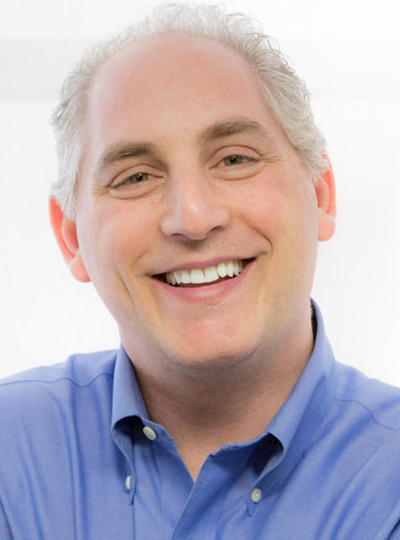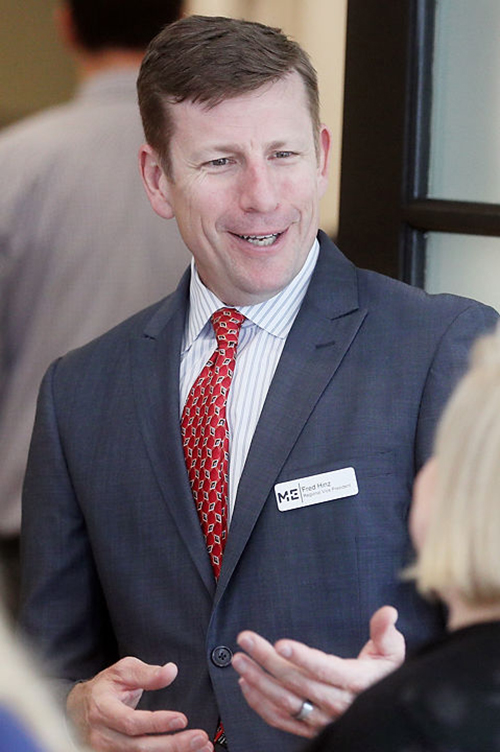Are Recent Predictions Regarding the Future of Healthcare Positive or Negative for Clinical Laboratories?
Medical laboratories that develop appropriate clinical strategies may find opportunities to leverage several new technologies expected to have a big impact on providers
Industry experts often speculate how developing technologies will impact healthcare. However, clinical laboratory leaders may be surprised by how much blockchain, medical malls, and Uber Health are expected to alter healthcare delivery in the next decade.
An article in FierceHealthcare states that “Healthcare is on the cusp of a technology revolution. Technology is primed to disrupt healthcare more explosively than it has any other industry.”
Medical advancements certainly impact clinical laboratories and anatomic pathology groups, and any acceleration in these developing technologies applied to healthcare will certainly be of interest to lab leaders who want to ensure their labs are ready.
Blockchain Provides Healthcare Security, Privacy, and Interoperability
Authored by Sloan Gaon, CEO, PulsePoint, the FierceHealthcare article predicts that blockchain will be an important feature in the future of healthcare. It will allow patients to have an online, accurate health record that is accessible only to necessary parties in real time. Consumers will be able to maintain, control, and share their data as they wish while increasing the security, privacy, and interoperability of their health information.
“A primary care physician could access a complete medical history of the member, while the radiologist could be limited to only the specifics he or she needs to perform the task at hand. For each, it’s about accessing the right data at the right time, and the blockchain technology could enable this type of specific ‘need-to-know’ medical history access,” wrote Bruce Broussard, President and CEO of Humana in a LinkedIn article.
The blockchain records can be shared among a network of computers and kept secure via cryptography. And the technology allows for easy transferability among different networks, improving performance and outcomes for patients. Broussard also stated that blockchain technology will provide more efficient payment for insurance claims.
“With transparency and automation, greater efficiencies will lead to lower administration costs, faster claims, and less money wasted. Blockchain enables claims to be paid without an intermediary, since health plan members are connecting directly with their providers. These consumers can also access their permanent electronic health records in a secure fashion, enabling them to have a real-time understanding of their health,” he wrote.
Should blockchain achieve widespread adoption as a platform for patient health information, the clinical laboratory industry will need to address the problem of different test methodologies and different reference ranges for test results. If blockchain makes it feasible to bring all pieces of a single patient’s cumulative health data into a single record, then clinical labs will need to address that problem in an effective way.

Medical Malls a Win-Win for Healthcare Providers and Retail Locations
With big shopping malls dying due to economic recessions and the emergence of online retail destinations, property owners are seeking new tenants. In the summer of 2017, there were still about 1,100 malls remaining in the US, however, a quarter of them were at a risk of closing within five years, Time noted that year.
As healthcare organizations expand, there is an overwhelming need for suitable space that is accessible for consumers at a reasonable price. Fading shopping malls with their convenient locations, sturdy foundations, and large parking lots could fill that gap.
In February of 2017, Avita Health System opened a boutique hospital in a space once occupied by an anchor store in a mall located in Ontario, Ohio. The healthcare provider purchased a 185,000 square-foot space that was formerly a Lazarus department store.
Mansfield News Journal reported that when the hospital opened, it included a walk-in clinic, an emergency room, surgical suites, pre-operative and post-operative areas, an onsite pharmacy, imaging services, a clinical laboratory, and 30 acute care beds.
Other services, including a Level II Cath lab, a maternity center, and the installation of a 3T Magnetic Resonance Imaging (3T MRI) machine, have been added since the facility opened. And there’s room for more expansion at the site.
Vanderbilt Medical Group (VMG) now occupies the entire second level of One Hundred Oaks Mall, in Nashville, Tenn. Their services at the once-struggling retail shopping center include 22 specialty clinics in 450,000 square feet of space designed by architecture firm Gresham Smith.
Patients can pick up a pager at the VMG facility and then shop on the lower level while waiting to be paged to see a healthcare professional or receive test results.
“More important than the significant increase in our available clinical space is the overall concept and design which is focused on providing our patients, faculty, and staff with a new paradigm for health and wellness. The convenience, accessibility, and innovative ways of providing care for our patients are a true transformation of both the architecture and the way our patients experience healthcare,” said Cyril Stewart, former Director of Facility Planning for Vanderbilt University Medical Center (VUMC) in a testimonial on the Gresham Smith website.
Non-Emergency Medical Transportation and Uber Health
Kaiser Family Foundation (KFF) reported in 2016 that “Medicaid’s non-emergency medical transportation (NEMT) benefit facilitates access to care for low income beneficiaries who otherwise may not have a reliable affordable means of getting to healthcare appointments. NEMT also assists people with disabilities who have frequent appointments and people who have limited public transit options and long travel times to healthcare providers, such as those in rural areas.”
The Hospital and Healthsystem Association of Pennsylvania (HAP) reported that an average of 3.6 million Americans miss their healthcare appointments annually due to lack of or unreliable transportation. These missed appointments can cause an avalanche of future problems, including increased visits to emergency rooms, extended hospital stays, and higher costs for providers.
Uber Health is positioned to become a major player in the field of non-emergency medical transportation (NEMT). The Verge reported in 2018 that independent research organization Transit Cooperative Research Program (TCRP) estimated that the NEMT market was worth more than $3 billion.
“If there are people who are missing their appointments because they’re using an unreliable bus service to get to and from their healthcare provider, this is a great solution for them,” Christopher Weber, General Manager and Senior Project Manager at Uber Health, told The Verge. “The types of individuals this is valuable for really is limitless.”
Uber health’s mobile device application (app) enables patients and healthcare providers to schedule non-emergency medical transportation for medical appointments within a few hours or up to a 30-day notice. It is also available both as an online dashboard and as an application-programming interface (API) for software developers to integrate the service into their proprietary healthcare tools.
An Uber (NYSE:UBER) account is not required, as notifications about rides can be sent to patients via text messages.
Clinical laboratory leaders may want to develop strategies around these three predictions to increase business and maximize profits. Since more healthcare organizations will soon be linked via blockchain, and an increased number of consumers could start using non-emergency medical transportation, such as Uber Health, to get to medical appointments, becoming familiar with these technologies could prove to be beneficial to labs.
In addition, medical facilities cropping up in former mall spaces will require medical laboratories to be onsite to support care and provide lab test results within an acceptable turnaround time.
—JP Schlingman
Related Information:
Industry Voices—How the Future of Healthcare Will be Shaped by the Likes of Uber, CVS
Blockchain: Transformational Technology for Health Care
Why the Death of Malls is about More than Shopping
Avita Ontario Hospital Poised to Open
Mall Landlords Welcome Medical Clinics as Retail Ails
Fighting the Blight: Reinventing Retail space for Vanderbilt Health
Uber is Driving Patients to Their Doctors in a Big Grab for Medical Transit Market
Study Finds Missed Medical Appointments Not Affected by Free Ride Services
Medicaid Non-Emergency Medical Transportation: Overview and Key Issues in Medicaid Expansion Waivers




